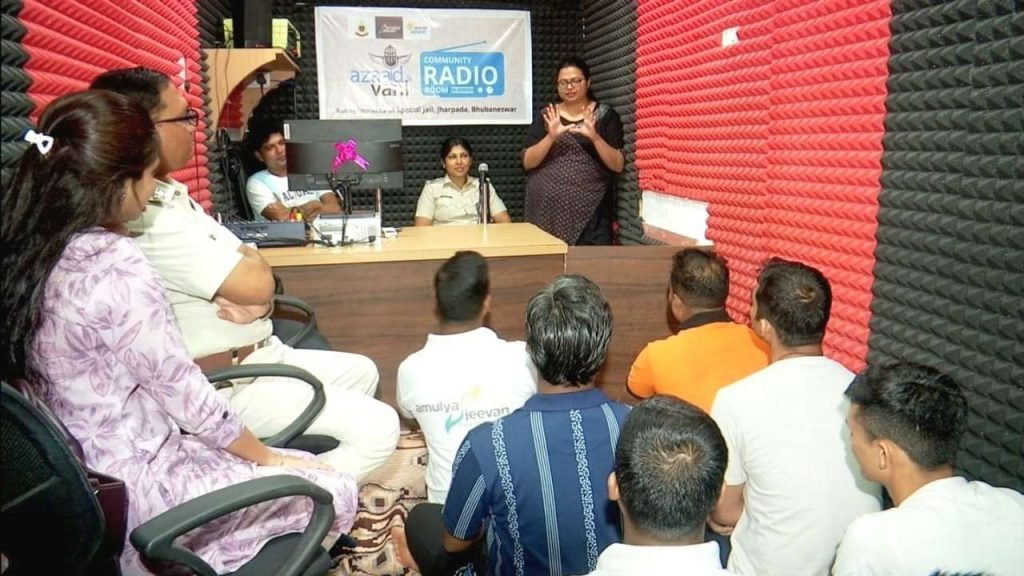In a significant move aimed at enhancing public safety and streamlining court procedures, the state of Odisha has implemented a policy to prevent high-risk prisoners from attending court in person. This decision, introduced in mid-2025, reflects the growing need for modern solutions to balance security concerns with the need for justice. With concerns surrounding the safety of the public and judicial personnel, this new policy comes as a proactive approach to managing high-risk individuals in the judicial system.
In essence, this policy is designed to identify and bar individuals from physically appearing in court when their presence poses a potential threat to public safety. High-risk prisoners, typically involved in serious criminal activities such as terrorism, organized crime, or violent offenses, have the potential to disrupt proceedings or even instigate violence during court hearings. In such cases, the courts, along with law enforcement agencies, will adopt alternative methods for these prisoners to participate in their trials without the need for physical appearance.

The policy’s rollout marks a crucial step forward in reshaping how the criminal justice system handles security and court procedures in India. Here’s everything you need to know about this important development and its implications for both the legal system and public safety.
Odisha Implements Policy to Prevent High-Risk Prisoners
| Key Aspect | Description |
|---|---|
| Target Group | High-risk prisoners involved in severe criminal activities like terrorism and organized crime. New Indian Express |
| Key Objective | Enhance public safety and minimize court disruptions by excluding high-risk prisoners from physical appearances in court. |
| Identification Process | Assessment by the Director General of Prisons in consultation with the DGP. Factors like offense severity and security risk are considered. |
| Exclusion Orders | Orders barring high-risk prisoners from attending court in person issued by the Home Department. |
| Review Process | The exclusion order will be reviewed biannually to assess its continued necessity. India Code |
| Legal Framework | This policy aligns with the Prisoners (Attendance in Courts) Act, 1955, allowing exemptions under certain conditions. |
Odisha’s new policy to prevent high-risk prisoners from attending court in person represents a smart, proactive approach to modernizing the criminal justice system. By focusing on security and efficiency, this policy protects both the public and judicial personnel while ensuring that the rights of prisoners are respected. As we continue to navigate an era of technological advancements, this policy also highlights the importance of innovation in maintaining justice and order.
In conclusion, the policy strikes a balance between public safety and justice. It’s a forward-thinking solution that promises to pave the way for future reforms in the Indian judicial system, ensuring that criminal proceedings are both fair and secure.
The Need for the Policy
Before we dive into the details, let’s take a step back and understand why this policy is necessary. In recent years, there has been an increasing concern about the safety and security of the judicial system, particularly when high-risk prisoners are involved. These individuals, many of whom are involved in severe criminal activities, can pose significant risks when transported to and from courtrooms.
Transporting high-risk prisoners, especially those linked to terrorism or organized crime, can create opportunities for violence or even escape attempts. Such occurrences not only disrupt legal proceedings but also place the lives of judicial staff, law enforcement, and the public at great risk. Thus, a method had to be devised to mitigate these dangers while still ensuring that justice is served in a fair and timely manner.
The Policy: Breaking It Down
Let’s look at how this new policy works in simple terms. Here are the core components:
1. Identification of High-Risk Prisoners
The process begins with identifying prisoners who are considered “high-risk.” These are individuals whose presence in a courtroom could potentially cause serious disturbances. To assess the risk level, the Director General of Prisons works closely with the Director General of Police (DGP) and other authorities to evaluate each prisoner’s potential threat level.
Factors like the severity of the prisoner’s offense, whether they have links to terrorist groups or organized crime, and their history of violence or attempts to escape will all be taken into consideration.
2. Issuing Exclusion Orders
Once identified, these prisoners are issued exclusion orders. This means that they will not be allowed to physically attend court hearings. Instead, alternatives such as virtual hearings or other remote methods may be used to ensure the prisoner’s participation without compromising security.
The Home Department plays a critical role in issuing these orders, which will be communicated to the concerned courts, prison officials, and law enforcement personnel.
3. Biannual Review of Exclusion Orders
A key aspect of the policy is its flexibility. The exclusion orders will not be permanent. Every six months, the Home Department will review the situation to determine if the prisoner’s circumstances have changed. If there’s a reduction in the threat level or a change in their criminal charges, the policy can be adjusted accordingly.
This review process ensures that the policy remains relevant and adaptive to the changing nature of criminal justice and public safety needs.
4. Legal Framework and Judicial Oversight
The new policy operates within the framework of the Prisoners (Attendance in Courts) Act, 1955. This Act already allows for exceptions to in-person court appearances under certain conditions, such as medical reasons or security concerns. The policy is an extension of this legal framework and aims to address modern-day security challenges.
Practical Benefits of the Policy
1. Increased Public Safety
By preventing high-risk prisoners from attending court in person, the state aims to reduce the chances of violent outbursts, jailbreak attempts, or attacks on law enforcement. This improves the overall safety of both the public and judicial personnel.
2. More Efficient Court Procedures
With fewer disruptions and less time spent on managing high-risk prisoners, courts can operate more smoothly. The time and resources that would have gone into safely transporting and securing these individuals in courtrooms can now be used to handle more cases.
3. Better Use of Technology
Virtual hearings and remote participation by prisoners are not new, but this policy promotes their wider adoption. This shift towards technology-driven solutions allows for better use of resources and more efficient management of the judicial process.
4. Minimizing Prisoner Escape Attempts
High-risk prisoners often pose significant challenges during transport to court. There have been multiple instances across the country where prisoners have escaped or tried to create chaos during their movement between prisons and courthouses. This policy helps minimize such incidents by removing the need for physical appearances.
Balasore Tragedy Sparks Statewide Shutdown: What to Expect on July 17 in Odisha
Odisha Government Orders Universities and Colleges to Follow IC Norms Within 24 Hours
11 Days Before Tragic Self-Immolation, Odisha Student Warned of Suicide
FAQs
Q1: How will high-risk prisoners participate in court proceedings if they can’t attend in person?
A: High-risk prisoners will participate through virtual hearings or video conferencing. The court can use secure online platforms to conduct hearings, ensuring the prisoner’s right to a fair trial while keeping the proceedings secure.
Q2: Will the policy apply to all prisoners?
A: No, the policy specifically targets high-risk prisoners—those involved in severe criminal activities such as terrorism, organized crime, or violent offenses. Regular prisoners will not be affected by this policy.
Q3: How often will the exclusion orders be reviewed?
A: The exclusion orders will be reviewed every six months to assess their continued necessity based on the prisoner’s threat level and other relevant factors.
Q4: Is this policy legally enforceable?
A: Yes, the policy is legally enforceable and operates under the framework of the Prisoners (Attendance in Courts) Act, 1955, which allows for exemptions to physical attendance in court under specific circumstances.





